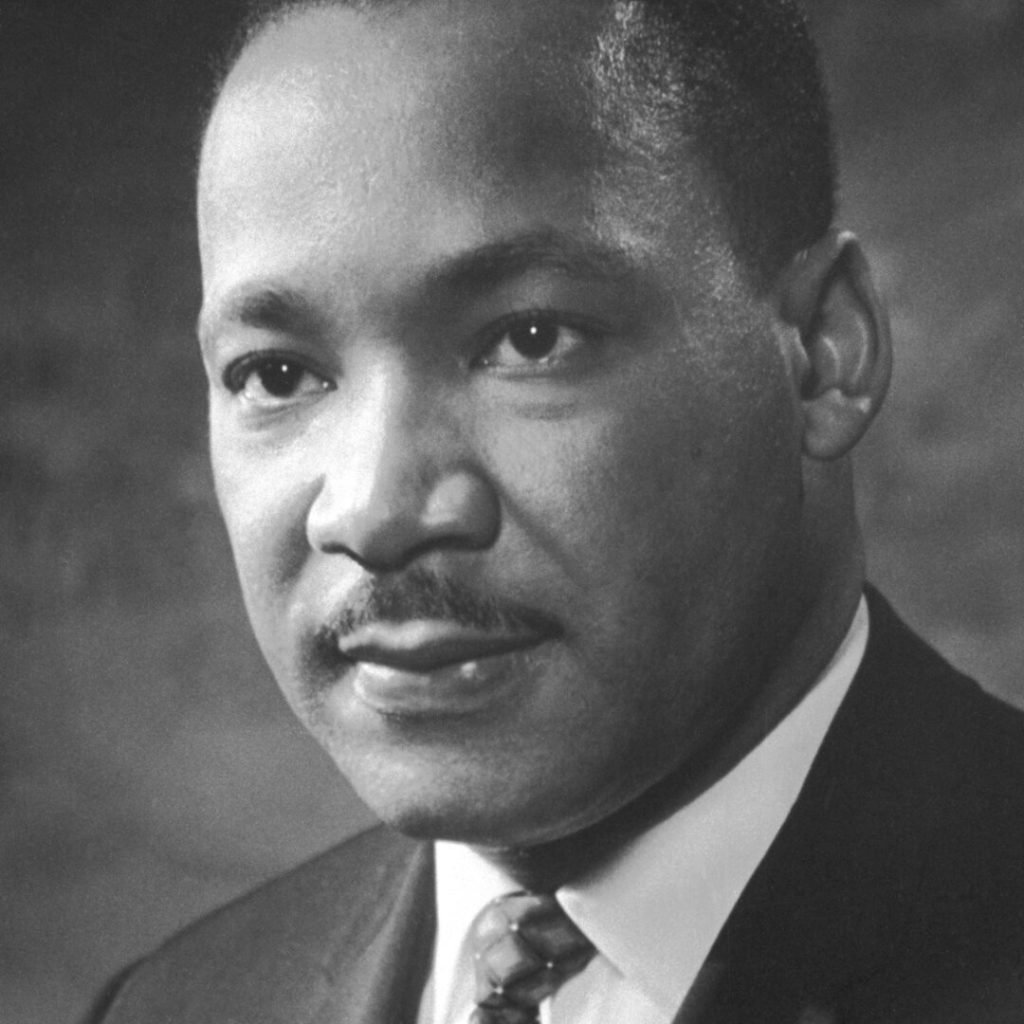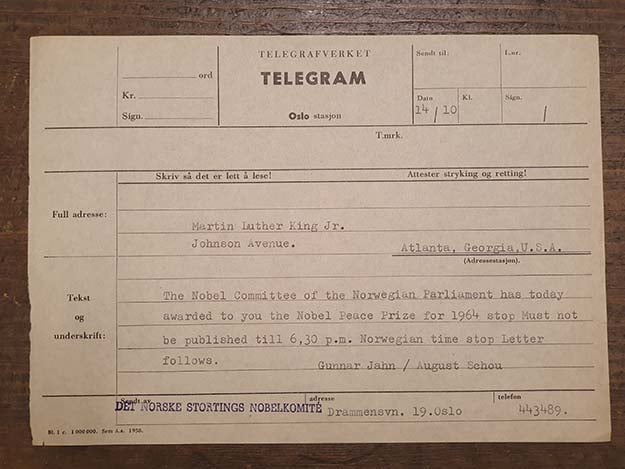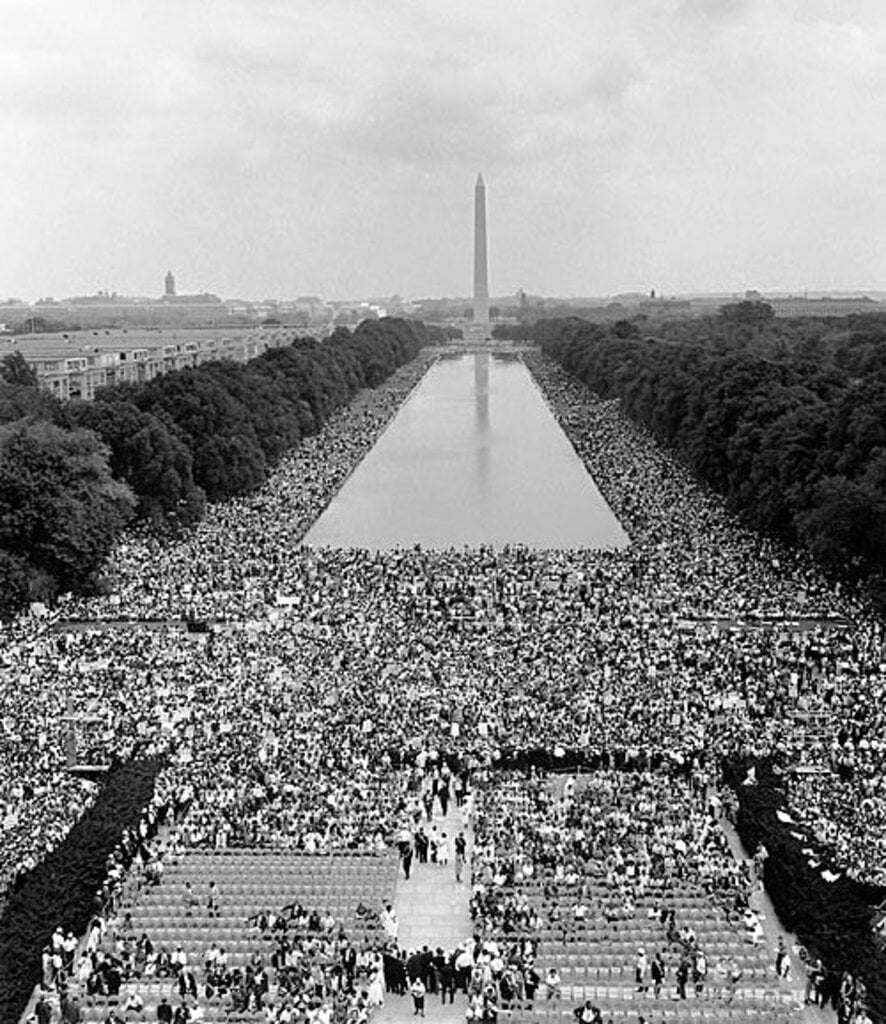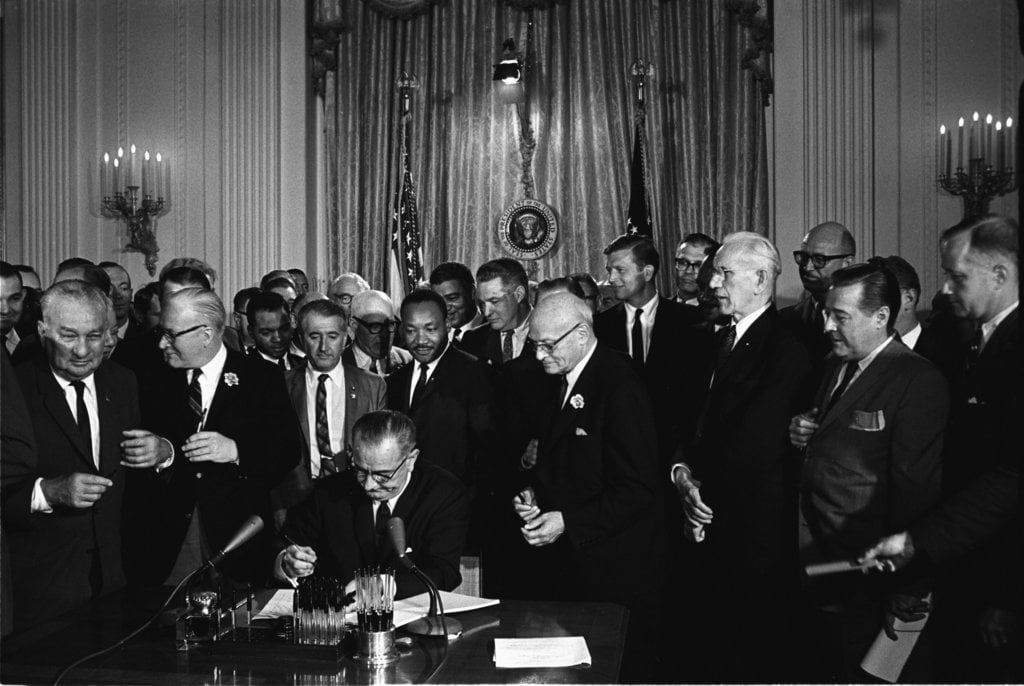Martin Luther King Jr.
Speed read
Martin Luther King Jr. was awarded the Nobel Peace Prize for his non-violent struggle for civil rights in the United States.

Full name: Martin Luther King Jr.
Born: 15 January 1929, Atlanta, GA, USA
Died: 4 April 1968, Memphis, TN, USA
Date awarded: 14 October 1964
The civil rights movement
Martin Luther King dreamed of a USA in which all citizens would be assessed in terms of their personal characteristics, not their skin colour. In 1955, he launched a movement to pressure the US government into bringing racial segregation in the South to an end. King was a proponent of Gandhi’s policy of non-violence, but white racists met the non-violent, black protest actions with brutality. In 1963, 250,000 demonstrators marched on Washington, DC. At the Lincoln Memorial, King held his famous ‘I have a dream’ speech. A year later, President Johnson was able to sign an act prohibiting racial discrimination, and King won international acclaim as the recipient of the Nobel Peace Prize. In April 1968, King was assassinated by a white racist. It remains unclear whether his murderer was operating alone or as part of a conspiracy.

”The word that symbolizes the spirit and the outward form of our encounter is nonviolence, and it is doubtless that factor which made it seem appropriate to award a peace prize to one identified with struggle.”
Martin Luther King, Nobel Lecture 11 December 1964.
The struggle against racism in the south
Segregation was strictly enforced in the southern states of the USA. Local legislation prohibited blacks from entering parks, cinemas, theatres and restaurants. Relegated to the back of public buses, they had to relinquish their seats to whites when a bus became full. In 1955, in Montgomery, Alabama, a black woman named Rosa Parks refused to give up her seat to a white man. She was arrested, and her trial marked the beginning of the organised struggle against segregation. Martin Luther King launched a long-term boycott of the municipal bus company. In time, King gained support from the US government, and, in 1961, municipal bus companies in the South were forced to abandon their segregationist policies.
| Boycott To refuse to be a part of something. Named after Captain Boycott of England. He treated Irish tenant farmers so harshly that nobody would sell him anything or buy goods from him. He was finally forced to leave Ireland. |
”Today, now that mankind is in possession of the atom bomb, the time has come to lay our weapons and armaments aside and listen to the message Martin Luther King has given us through the unarmed struggle he has waged on behalf of his race.”
Presentation Speech by Chairman of the Nobel Committee Gunnar Jahn, 11 December 1964.
Sit-ins and freedom rides
In 1955, Martin Luther King became the leader of the movement to end segregation in the South. For this he was subjected to death threats and arrest. In 1959, black students began to stage “sit-ins” in whites-only restaurants. They demanded service and refused to leave even when white patrons burnt them with cigarettes and scalded them with hot coffee. King also participated in these sit-ins. Later, black and white civil rights activists started taking “Freedom Rides”, driving together through the South in buses. Racists responded by assaulting the passengers and burning the buses.
“I have a dream”
Inspired by Mahatma Gandhi, Martin Luther King and his followers engaged in a non-violent struggle to end segregation. Their strategy was to provoke racists into using violence, so that the ensuing media coverage would serve to pressure the government into banning racism. In 1963, King and his followers organised a march in which 250,000 demonstrators converged on the Lincoln Memorial in Washington, DC, a symbol of democracy and freedom. In his speech, King said, “I have a dream that my four children will one day live in a nation where they will not be judged by the color of their skin but by the content of their character.”
| Lincoln Memorial Memorial in Washington, DC honouring Abraham Lincoln, president during the American Civil War (1861-1865). Built in 1922, the Lincoln Memorial symbolises the ideals of freedom and democracy. |

”King (…) preached the gospel of sacrifice by declaring that any man who has found nothing for which he is prepared to die has not yet found a reason to live.”
Peter J. Ling: Martin Luther King, Jr., Routledge 2002.
King’s assassination
In 1964, President Lyndon Johnson signed an act prohibiting racial discrimination, and he received leading civil rights activist Martin Luther King at the White House. Shortly after their meeting, however, King came into conflict with the president. He believed that Johnson was not doing enough to help the poor, and he criticised US involvement in the Vietnam War. In 1968, King planned a march on Washington for the poor, but he was assassinated before it could be carried out. A white racist was convicted of his murder. King’s family accused the government of being behind his assassination, but there is little evidence to substantiate their claim.

Source: Lyndon Baines Johnson Library and Museum.
Photo: Yoichi R. Okamoto
Learn more
Martin Luther King, Jr., (January 15, 1929-April 4, 1968) was born Michael Luther King, Jr., but later had his name changed to Martin ...
Disclaimer: Every effort has been made by the publisher to credit organisations and individuals with regard to the supply of photographs. Please notify the publishers regarding corrections.
Nobel Prizes and laureates
Six prizes were awarded for achievements that have conferred the greatest benefit to humankind. The 12 laureates' work and discoveries range from proteins' structures and machine learning to fighting for a world free of nuclear weapons.
See them all presented here.
